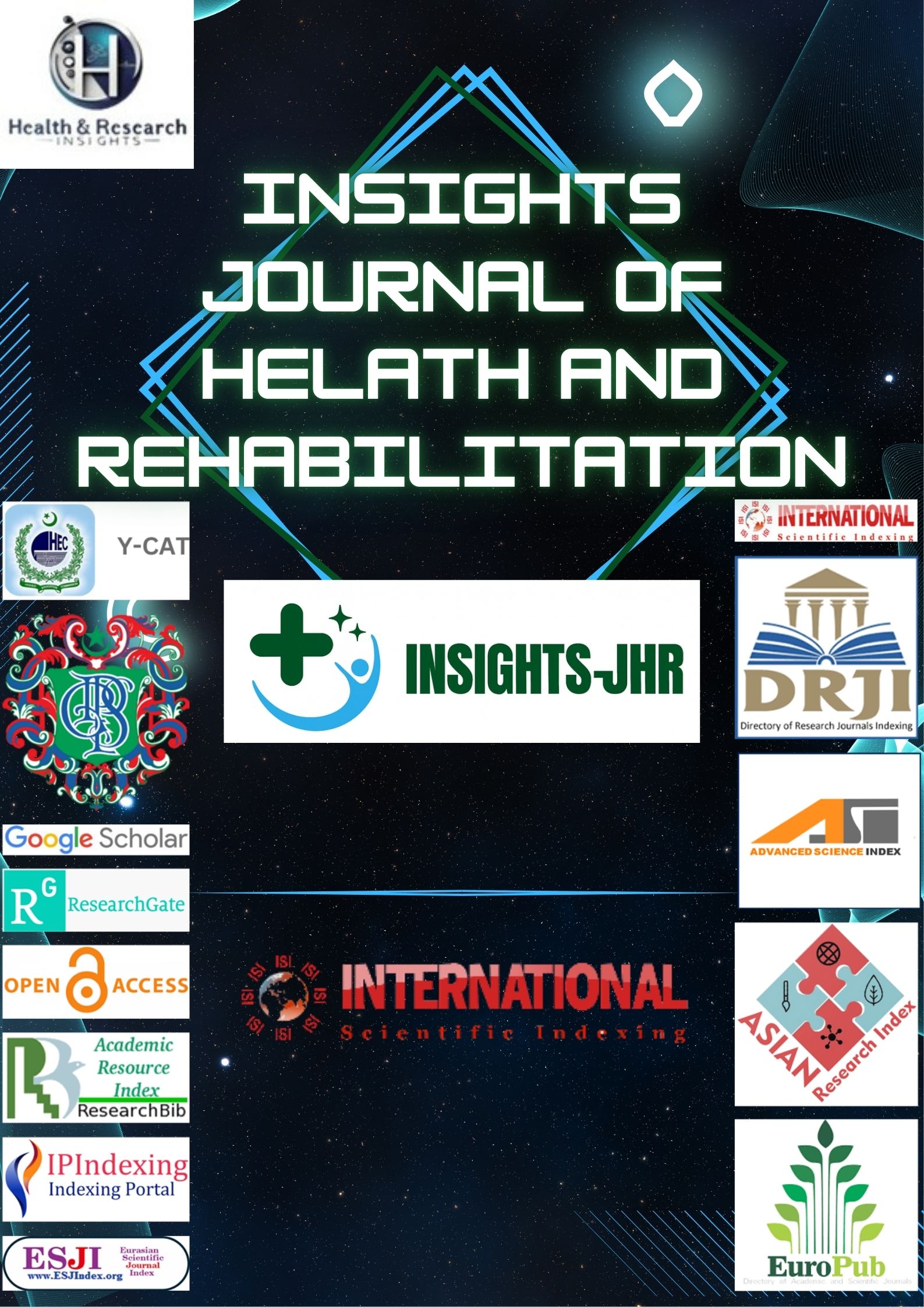AI-POWERED ULTRASOUND INTERPRETATION FOR EARLY DETECTION OF KIDNEY ABNORMALITIES IN RURAL PATIENTS
DOI:
https://doi.org/10.71000/f0jswf03Keywords:
Artificial Intelligence, Diagnostic Imaging, Kidney Diseases, Nephrology, , Renal Ultrasonography, Rural Health, Screening, , TelemedicineAbstract
Background: Chronic kidney disease (CKD) often remains undiagnosed in its early stages, particularly in rural and underserved populations lacking access to nephrologists and diagnostic imaging. Ultrasonography is a first-line tool for kidney evaluation but is limited by operator dependence. Recent advancements in artificial intelligence (AI) have introduced opportunities for automated, standardized interpretation of ultrasound images, potentially improving early detection in low-resource settings.
Objective: To evaluate the effectiveness of AI-assisted ultrasound interpretation in detecting early renal abnormalities among underserved rural populations in Pakistan.
Methods: A cross-sectional study was conducted from January to June 2025 at private rural healthcare centers in Lahore, Faisalabad, and Multan. A total of 200 adult patients underwent renal ultrasonography using portable devices equipped with AI diagnostic software. Inclusion criteria were adults ≥18 years without prior CKD diagnosis. AI findings were compared with interpretations by experienced radiologists. Outcome measures included sensitivity, specificity, accuracy, and inter-observer agreement. Statistical analysis was performed using SPSS v26, and ROC curves were generated to evaluate diagnostic performance.
Results: AI-assisted ultrasound demonstrated a sensitivity of 92.3%, specificity of 89.1%, and accuracy of 90.7% in detecting early renal abnormalities, outperforming radiologist interpretation in certain lesion categories. The AI model showed particularly high performance in identifying increased cortical echogenicity and early hydronephrosis. Agreement between AI and radiologist findings reached 91%, with minimal discordance. The area under the ROC curve for AI was 94.2%, indicating excellent diagnostic capability.
Conclusion: AI-assisted ultrasound interpretation significantly improves early detection of renal abnormalities in rural populations, supporting its integration into primary care to reduce diagnostic disparities and enhance kidney health outcomes.
References
Erdman L, Milford K, Solomon Z, et al. Barriers and opportunities to improve renal outcomes in South Africa using AI technology for pediatric ultrasound interpretation. Proc ICTD 2022. https://doi.org/10.1145/3572334.3572379
Xu T, Zhang X-Y, Yang N, et al. A narrative review on the application of artificial intelligence in renal ultrasound. Front Oncol. 2024;13. https://doi.org/10.3389/fonc.2023.1252630
Liang X, Du M, Chen Z. Artificial intelligence-aided ultrasound in renal diseases: a systematic review. Quant Imaging Med Surg. 2023;13:3988-4001. https://doi.org/10.21037/qims-22-1428
Tsai M, Lu HHS, Chang Y-C, Huang Y-C, Fu L. Automatic screening of pediatric renal ultrasound abnormalities: deep learning and transfer learning approach. JMIR Med Inform. 2022;10. https://doi.org/10.2196/40878
Chitra R, Gogula B. A survey of advanced algorithms and experimental approaches for kidney abnormality detection in ultrasound imaging. ICEARS 2025. https://doi.org/10.1109/ICEARS64219.2025.10940154
Tang ZY, Lin YC, Shen C. Dual-path convolutional neural network for chronic kidney disease classification in ultrasound echography. IEEE IUS 2022. https://doi.org/10.1109/IUS54386.2022.9957954
Zhao Y, et al. Ultrasound-based imaging methods for the assessment of kidney fibrosis on artificial intelligence. J Am Soc Nephrol. 2023;34:98. https://doi.org/10.1681/ASN.20233411S198a
Prodhan MJA, Alam KS, Rahman M, et al. Role of ultrasound in diagnosing chronic kidney disease. Scholars J Appl Med Sci. 2024. https://doi.org/10.36347/sjams.2024.v12i09.002
Liang X, Du M, Chen Z. Artificial intelligence-aided ultrasound in renal diseases: a systematic review. Quant Imaging Med Surg. 2023;13:3988-4001. https://doi.org/10.21037/qims-22-1428
Zhao D. Ultrasound-based imaging methods for the assessment of kidney fibrosis on artificial intelligence. J Am Soc Nephrol. 2023;34:98. https://doi.org/10.1681/ASN.20233411S198a
Chitra R, Gogula B. A survey of advanced algorithms and experimental approaches for kidney abnormality detection in ultrasound imaging. ICEARS 2025. https://doi.org/10.1109/ICEARS64219.2025.10940154
Liang X, Du M, Chen Z. Artificial intelligence-aided ultrasound in renal diseases: a systematic review. Quant Imaging Med Surg. 2023;13:3988-4001. https://doi.org/10.21037/qims-22-1428
Xu T, Zhang X-Y, Yang N, et al. A narrative review on the application of artificial intelligence in renal ultrasound. Front Oncol. 2024;13. https://doi.org/10.3389/fonc.2023.1252630
Tang ZY, Lin YC, Shen C. Dual-path convolutional neural network for chronic kidney disease classification in ultrasound echography. IEEE IUS 2022. https://doi.org/10.1109/IUS54386.2022.9957954
Zhao D. Ultrasound-based imaging methods for the assessment of kidney fibrosis on artificial intelligence. J Am Soc Nephrol. 2023;34:98. https://doi.org/10.1681/ASN.20233411S198a
Erdman L, Milford K, Solomon Z, et al. Barriers and opportunities to improve renal outcomes in South Africa using AI technology for pediatric ultrasound interpretation. Proc ICTD 2022. https://doi.org/10.1145/3572334.3572379
Esmail E, Mohammed AAA, Mohammed RAA, et al. Kidney Disease Classification and Diagnosis: A Comprehensive Review of Current AI Techniques. IEEE eSmarTA 2024. https://doi.org/10.1109/eSmarTA62850.2024.10638841
Wang Y, Wen Q, Jin L, Chen W. Artificial Intelligence-Assisted Renal Pathology: Advances and Prospects. J Clin Med. 2022;11(16):4918. https://doi.org/10.3390/jcm11164918
Halder S, Patidar S, Chaudhury K, Mandal S. Deep Learning based Multi-modal Ultrasound-Photoacoustic Imaging. IEEE SAUS 2024. https://doi.org/10.1109/SAUS61785.2024.10563622
Gao Y, Zhang X, Liu Y, Chen H. Enhanced ultrasound imaging multitask network for renal lesion segmentation and classification. Front Oncol. 2025;13. doi: 10.3389/fonc.2023.1295262
Downloads
Published
Issue
Section
License
Copyright (c) 2025 Muhammad Awais, Asma Rehman, Rabia Shahzad , Ramsha Zafar , Rabia Khattak , Nageena Ghafoor , Maham Salman , Hafsa Saleem (Author)

This work is licensed under a Creative Commons Attribution-NonCommercial-NoDerivatives 4.0 International License.







